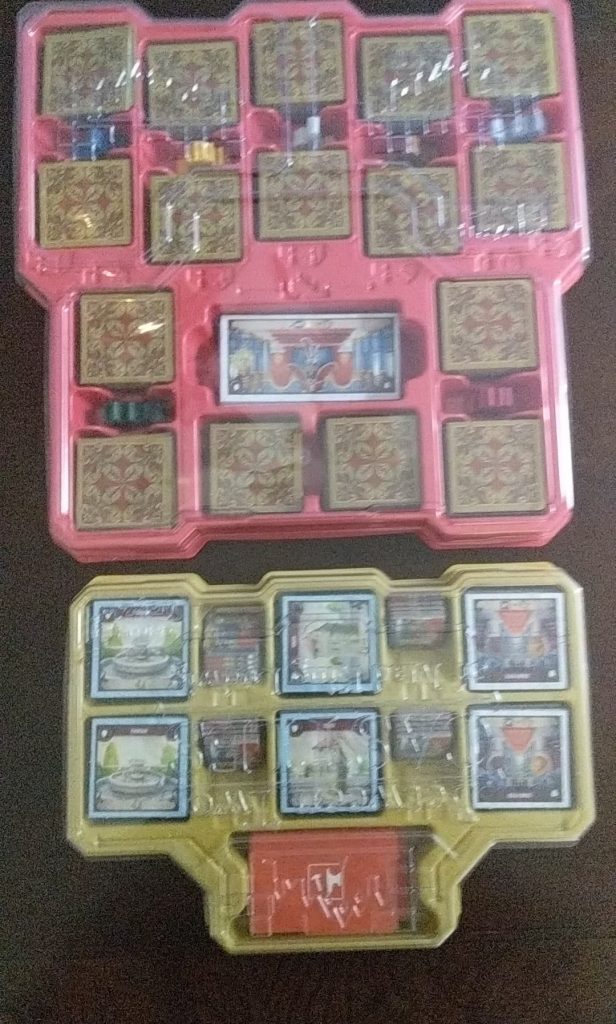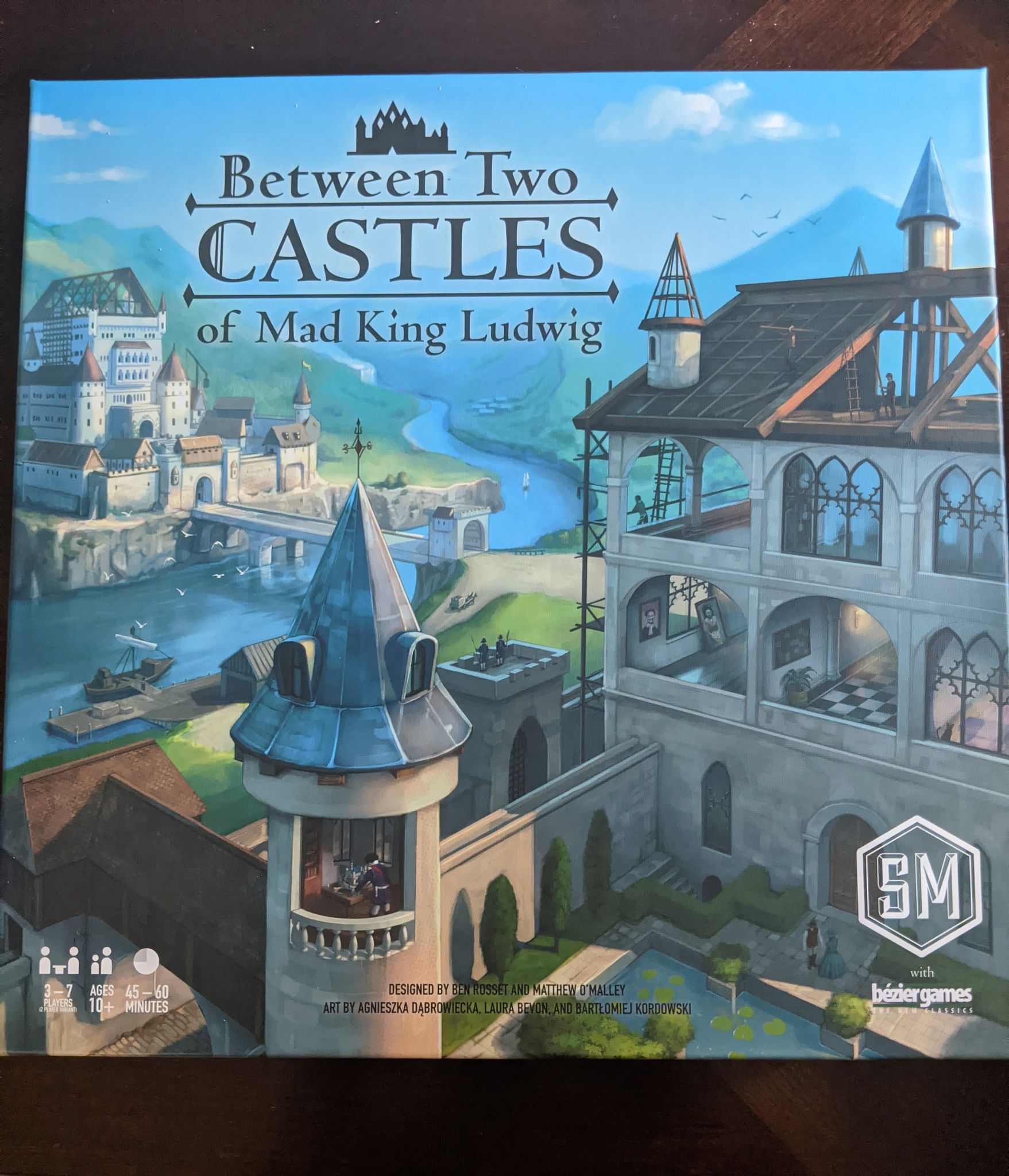Stonemaier games was responsible for my favorite game I played last year. It was a weird game called Wingspan in which you collected food to feed birds. No matter how many ways I’ve tried to describe it, I usually get the same smirking response where the person being raved to says “That sounds stupid.”
Luckily , Between Two Castles of Mad King Ludwig, a collaboration of Stonemaier and Bézier Games, is a much easier sell. The two companies created a new game by mashing together concepts from previous games they’ve created(Between Two Cities from Stonemaier and Castles of Mad King Ludwig from Bézier) and the result is delightful.
This amalgam becomes a semi-cooperative game that allows for 3-7 players to build the best castles for King Ludwig, who is apparently stark raving mad. Though the distinction is made, the King’s disposition plays little role in affecting the game.
Between Two Castles of Mad King Ludwig is a traditional drafting game where players exchange tiles from a given stack, selecting two tiles before passing the stack to the next player. Once a selection is made players reveal the unique rooms underneath. The game contains 147 unique room tiles that fall into seven categories: Food, Living, Utility, Outdoor, Sleeping, Corridor, and Downstairs. It is with these pieces you will build the most impressive vertical castle the monarch has ever seen. Rooms can be placed at ground level in most cases, attaching to your throne room starting piece, or, in the case of downstairs rooms, underneath. Corridors may be placed either underground or above provided they don’t interfere with other rules. Outside rooms may be placed above ground, but may not have anything above it, you know, because its outdoors.
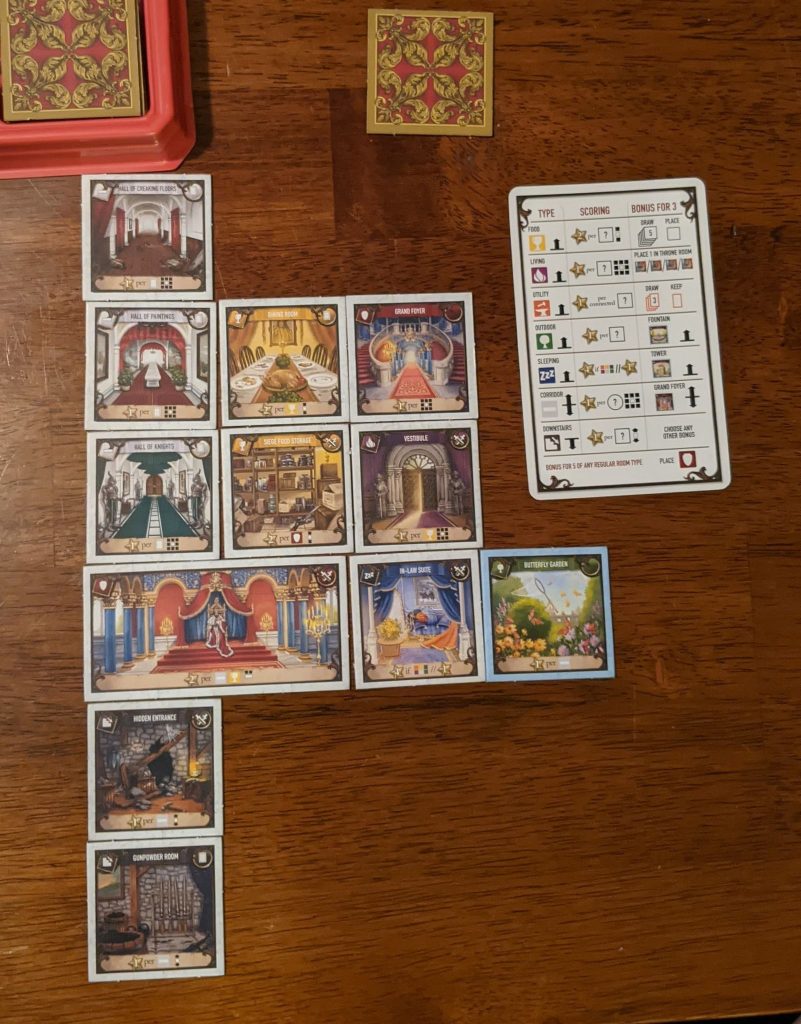
Hang on though. Remember when I said this was a semi-cooperative game? Looking left and right to the players next to you, you’ll find partners to assist your construction efforts. Each player assists in building not one, but two castles to their right and left, hence the name Between Two Castles.
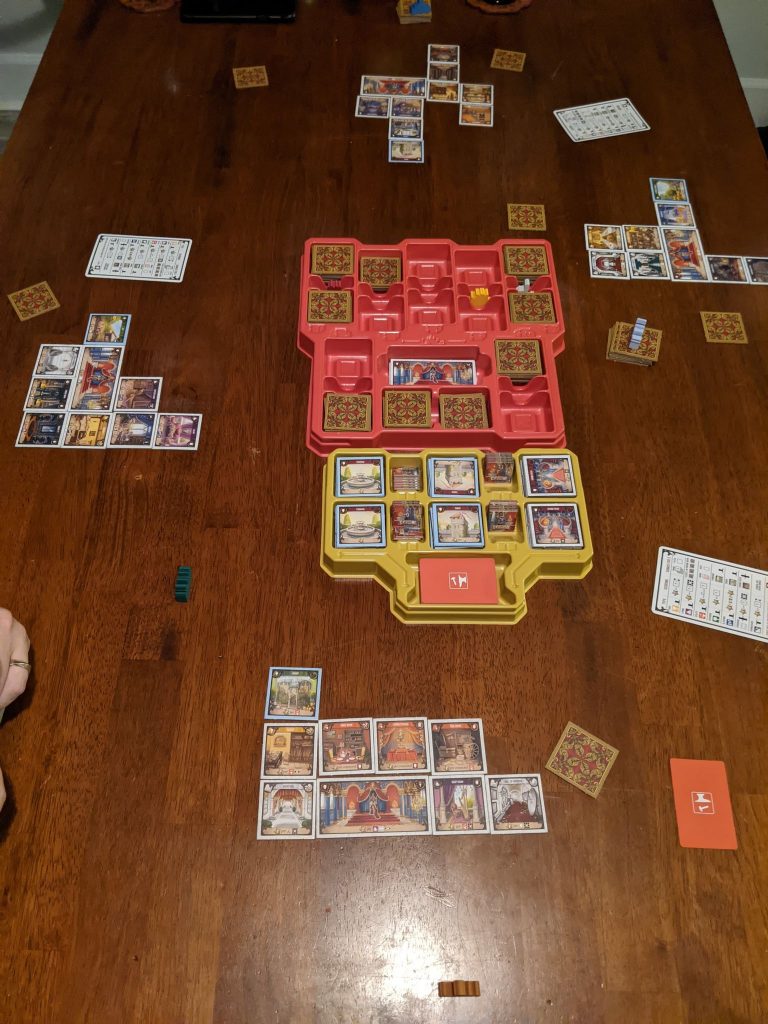
It’s important to utilize your partners to craft the best castle you can because in the end a winner is decided by tallying points from every castle. The winner is selected by determining the highest low-score. Effectively, what that means for the players is they have to work with those to the left and right to create the best two castles. If you spend all your best efforts in one castle, the other will fall short.
So how do you acquire points? The seven types of rooms previously mentioned each have a set of rules that key off other rooms. Your Food room might receive points for specific rooms to its left or right. Corridors take points from rooms around it. Outdoor rooms get points for each room of a single type. So on and so forth.
Furthermore, once a castle has three rooms of the same type, they receive a bonus which could be special rooms that give plenty of points, bonus cards for extra points at game end, or servants that key of various cards and possibly giving large point boosts at the game end.
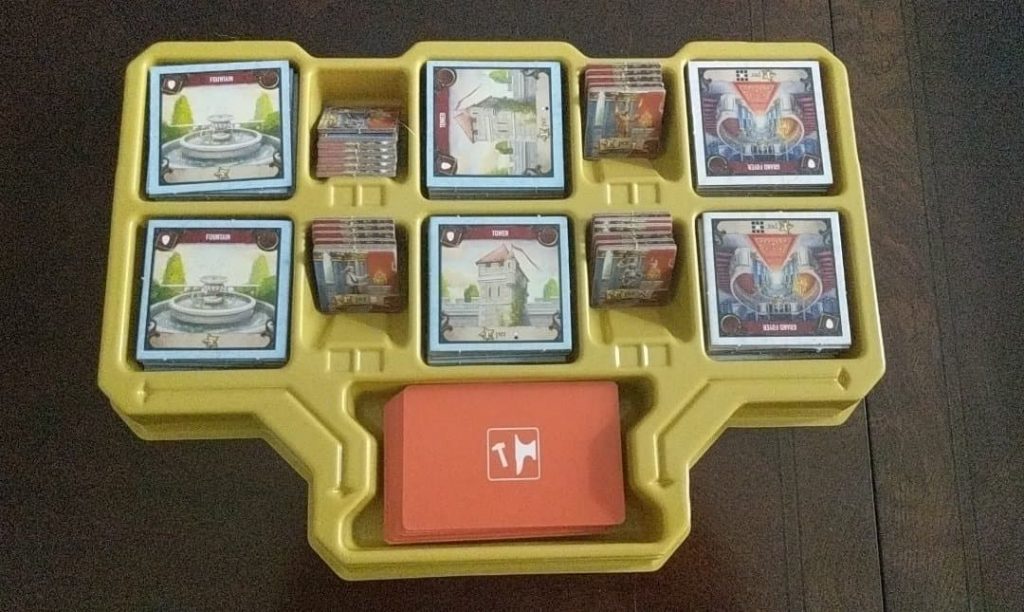
Winning the game is tricky and requires partners to work together. Screwing a partner does nothing to help you and will only hurt you in the long run. The game is quickly played. If players know the game well enough, I wouldn’t expect it to go over 30-45 minutes. Obviously leave room for new players to get acquainted with how the tiles interact. You do want the best castles, after all. So now that we’ve discussed gameplay, I want to veer into the actual product itself. The tiles are standard cardboard pieces with great illustration showing off each room you’ll place into your castles. Below are my favorites:
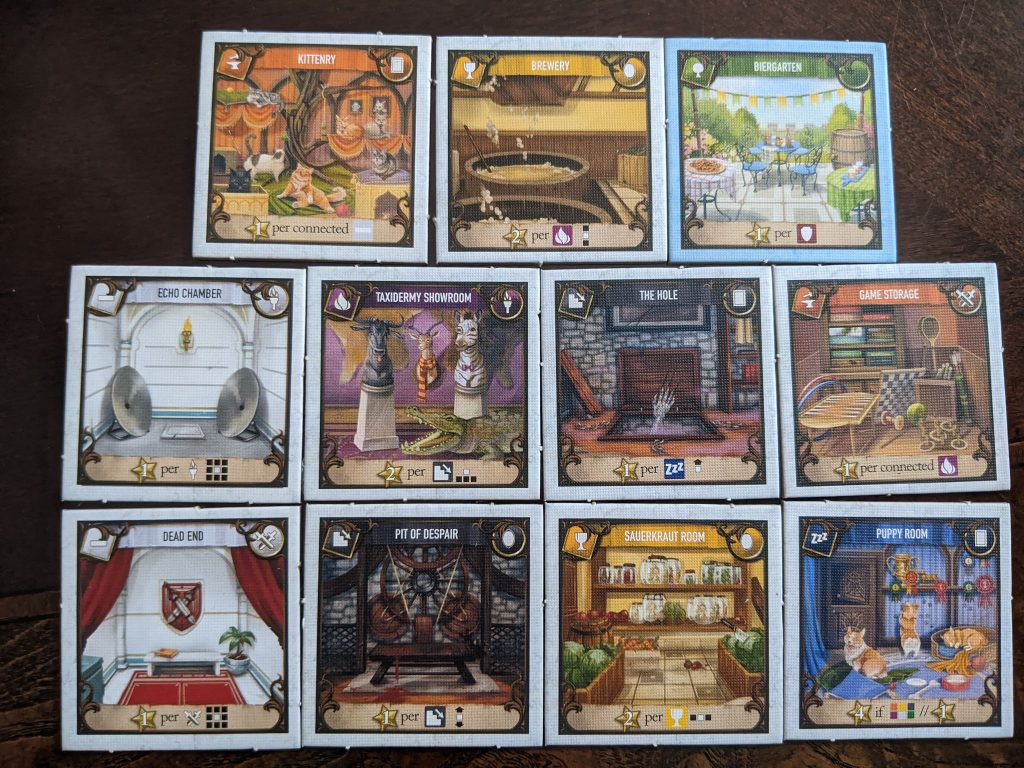
There are 7 wooden “meeple” castles to assist in your tile draft. What I mean by that is unlike Sushi GO!, another drafting game, your castle piece is a clear indicator you’ve made your selection. Sushi GO! has no such indicator. In Between two castles, once you’ve selected your tiles and hand off the rest of your stack, you’ll place a castle meeple on top of it so stacks don’t get mixed up, which can happen in drafting style games.
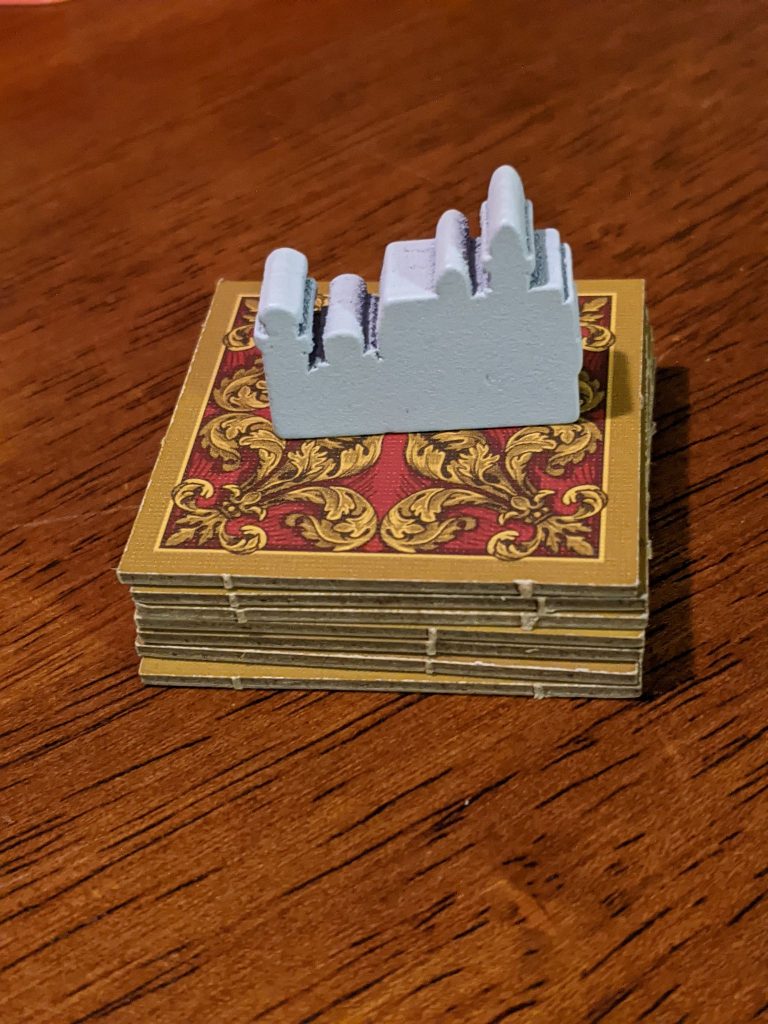
However, the my absolute favorite thing about this product(aside from it being pretty fun in it’s own right) are the hard plastic organization containers it comes with. If you’re like me, you want minimal mess and clean-up with a simple set up. This game comes with an organizer that is used in game and after. Unlike games like the colossal Gloomhaven where I had to build my own organization boxes, and poorly I might add, Stonemaier and Bézier Games just gave it to me as part of the product. That’s quality.
Finally, there isn’t much to say. The game is a winner. It’s quick, easy, requires little clean up, and has only a small amount of set up. The game can usually be found under $45 and comes highly recommended by my play group and I.
-Ryan Miller
